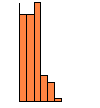 Figure 1 showing the total number of fish bones per level.
(Click thumbnail for enlarged figure in viewing window)
Figure 1 showing the total number of fish bones per level.
(Click thumbnail for enlarged figure in viewing window)The site excavated is located on the southeastern coast of Mabuiag Island. The midden deposit itself is one of a number (over 90) of midden features recorded across the surface of the old village and ceremonial site of Gumu. The deposit has yielded an (uncalibrated) radiocarbon date from charcoal of 600 ± 70 BP (Beta-21385) (Harris and Ghaleb 1987, 18). The fish remains discussed in this paper are from one of five metre-squares excavated to determine the stratigraphy and content of the deposit. Excavation of the metre-square which is referred to here as square M, revealed 0.5m of densely packed and dark-coloured midden deposit consisting primarily of fragments of the marine mammal Dugong dugon, the marine turtle Chelonia mydas, various fish and shellfish species, and chunks of metamorphic stone, with a few small-mammal (rodent), bird, reptile and charred plant remains. The deposit was excavated in 50mm-thick units (or until a change in the nature of the deposits was noted) and sieved through 4mm, 2mm, and 1mm size meshes on site for total recovery of the remains, with subsamples sieved through a 500 micron mesh off site. The remains were initially sorted and analysed according to the excavated 50mm-thick levels.
Approximately 6,500 fish bones were analysed from alternate spits from a one-quarter (i.e. quadrant) sample of Square M studied in detail. Of these only 25% were identified as either fragments of fish cranial elements or vertebra, with 75% classified as unidentifiable, that is, either nondescript fragments between 0.5-1.5mm, or fragments of fish spines. Within the 25% of identifiable fish remains, 10% consisted of cranial element fragments, and 15% of vertebrae (20% elasmobranch, 80% teleost). Although the number of fish bones did vary by level (Figure 1), the number identified to cranial element or vertebrae did not vary significantly, averaging 30% per level (Figure 2).
 Figure 1 showing the total number of fish bones per level.
(Click thumbnail for enlarged figure in viewing window)
Figure 1 showing the total number of fish bones per level.
(Click thumbnail for enlarged figure in viewing window)
 Figure 2 showing the percentage of fish bones identified per level
i.e. cranial elements and vertebrae. (Click thumbnail for
enlarged figure in viewing window)
Figure 2 showing the percentage of fish bones identified per level
i.e. cranial elements and vertebrae. (Click thumbnail for
enlarged figure in viewing window)
Within the 10% of cranial element fragments, 39% were identified to element type, with 61% to element type and family. Figures 3 and 4 show the percentage occurrence of cranial bone fragments identified to element and family by element type.
 Figure 3 showing the percentage
occurrence of cranial bones identified to element. (Click
thumbnail for enlarged figure in viewing window)
Figure 3 showing the percentage
occurrence of cranial bones identified to element. (Click
thumbnail for enlarged figure in viewing window)
 Figure 4 showing the percentage
occurrence of cranial bone elements identified to genus. (Click
thumbnail for enlarged figure in viewing window)
Figure 4 showing the percentage
occurrence of cranial bone elements identified to genus. (Click
thumbnail for enlarged figure in viewing window)
Within the 39% of cranial bones identified to element type, 51% consisted of skull, jaw (dentary or premaxilla), teleost teeth, and dentary fragments. The 61% of cranial elements identified to family consisted of 49% of premaxilla, inferior pharyngeal, dentary and articular bone fragments.
Nine genera were identified belonging to eight families. The percentage occurrence of fish cranial elements identified to family for the entire sample is shown in Figure 5.
 Figure 5 showing the percentage
occurrence of cranial fish elements identified to family. (Click thumbnail for enlarged figure in viewing window)
Figure 5 showing the percentage
occurrence of cranial fish elements identified to family. (Click thumbnail for enlarged figure in viewing window)
On average four genera were identified per level, with a maximum of seven, and a minimum of three. The fish identified consist of (in order of abundance), labrids, tuskfish, (Choerodon sp.); scarids, parrotfish (Scarus sp.); lethrinids, bream or sweetlip (Lethrinidus sp.); chaetodontids, sea perch (Lutjanus sp.); serranids, coral trout and cod (Plectropomus sp. and Epinephelus sp.); centropomids, sand bass (Psammoperca sp.); carangids, trevally (Caranx or Gnathanodon sp.); and dasyatids, or rays. The majority of the fish identified are either labrid, scarid or lethrinid, together comprising 88% of the total sample. However, 39% of the bones identified to cranial element type, were not identified to family (primarily due to inadequate modern comparative material), so the diversity of fish species may be significantly higher than demonstrated here.
© Internet Archaeology
Internet Archaeology
Last updated: Tue Jul 7 1998